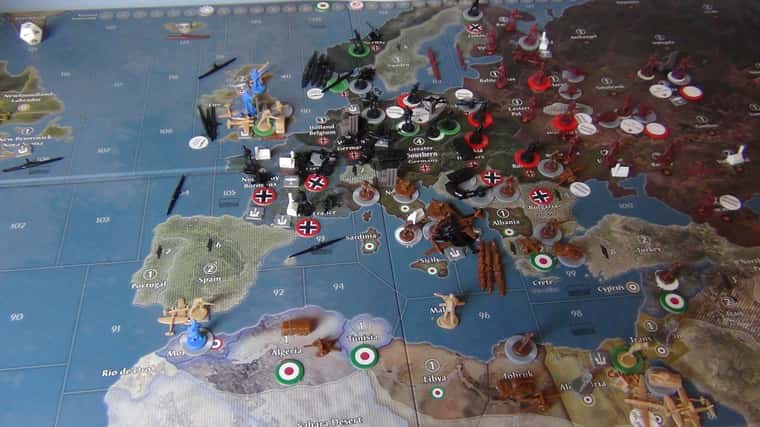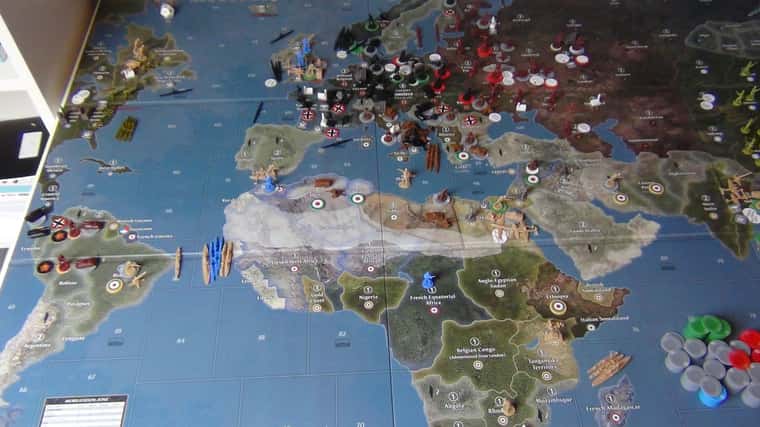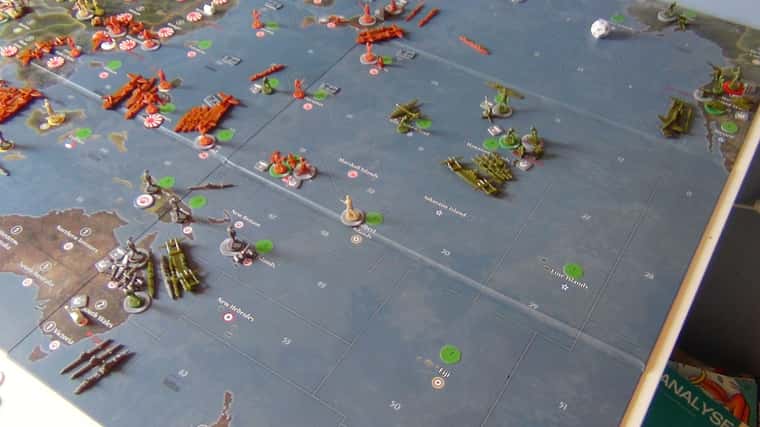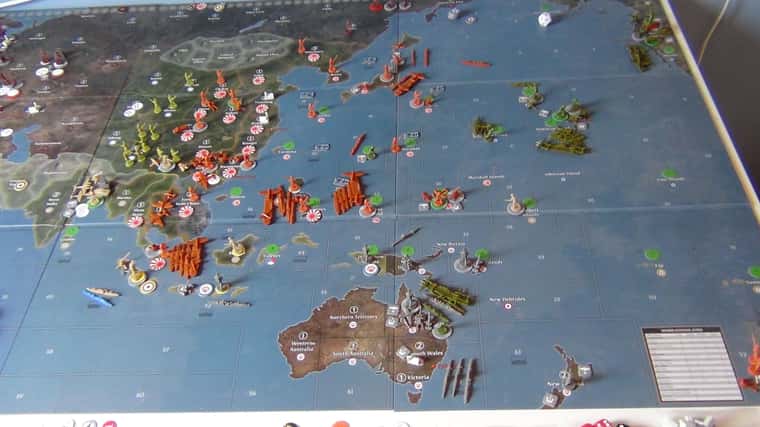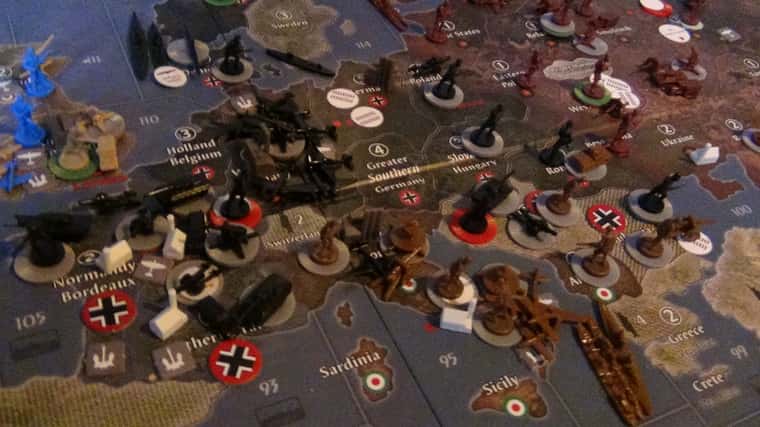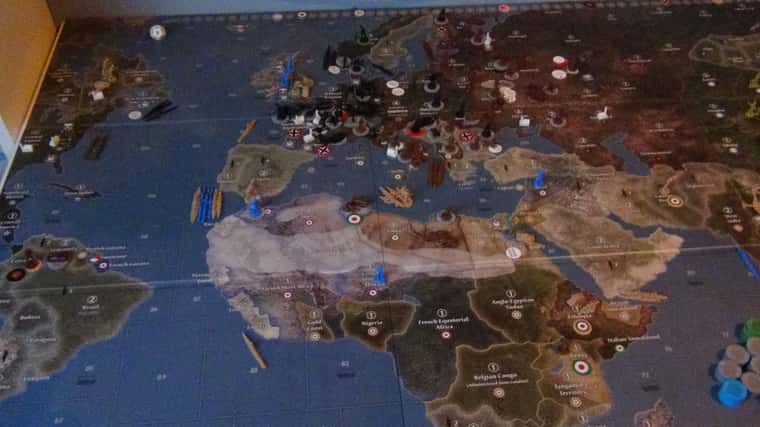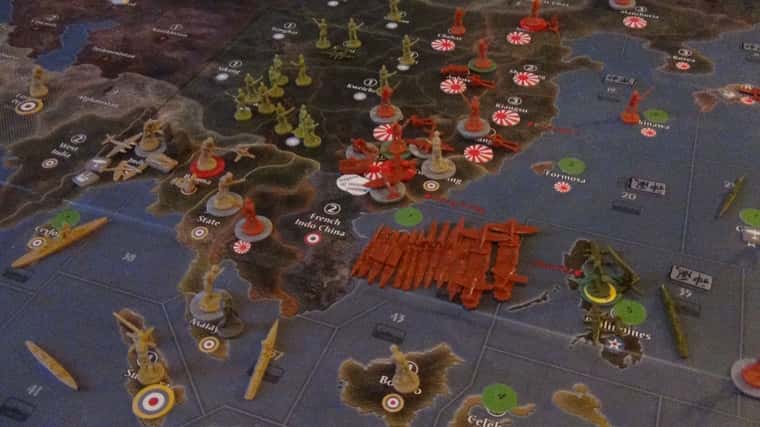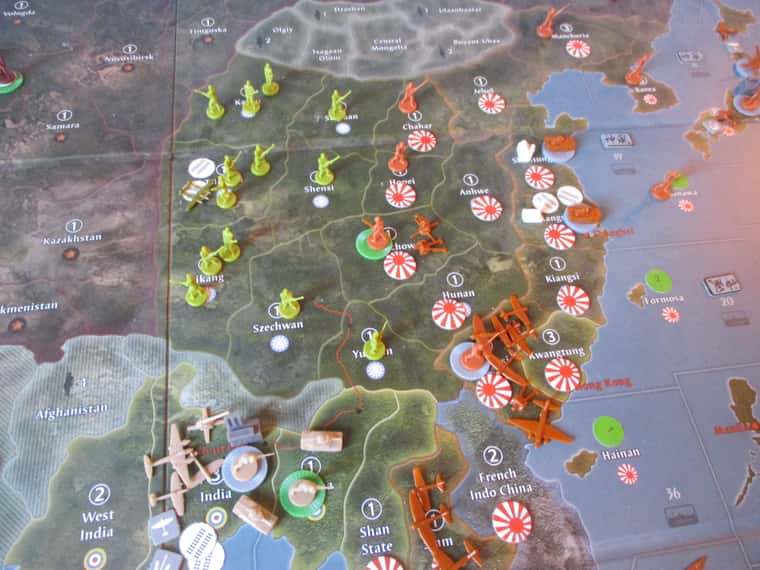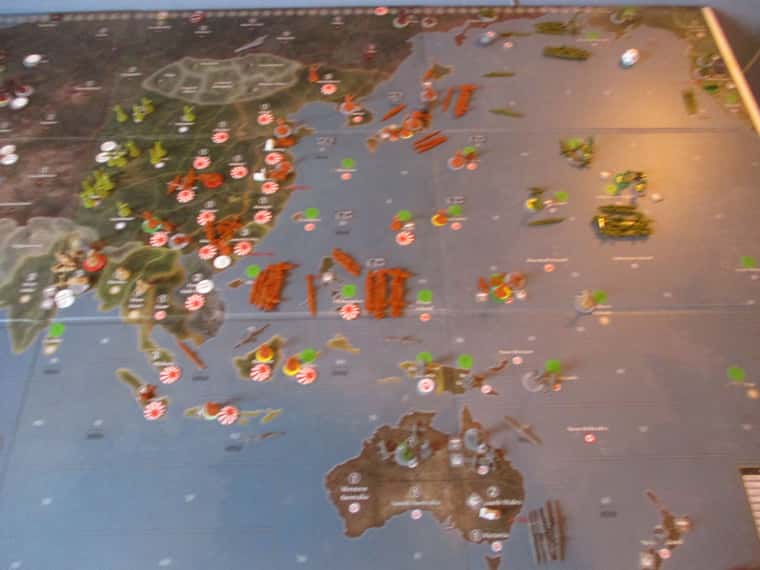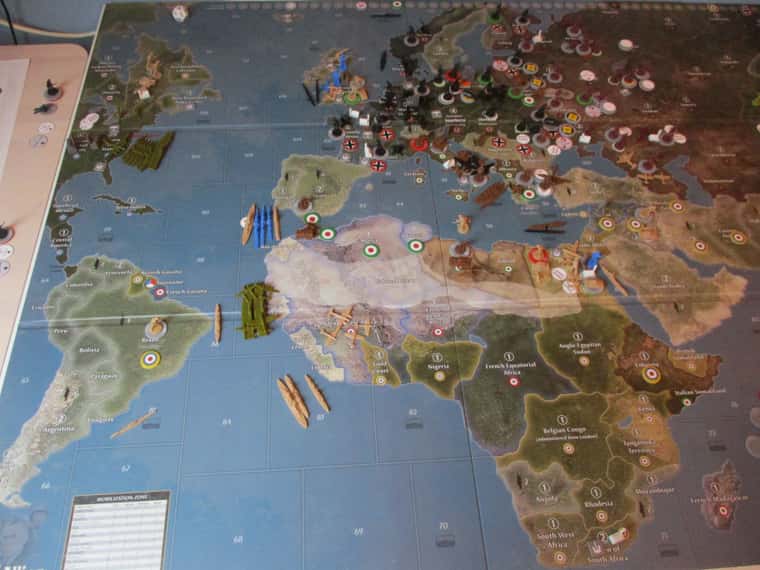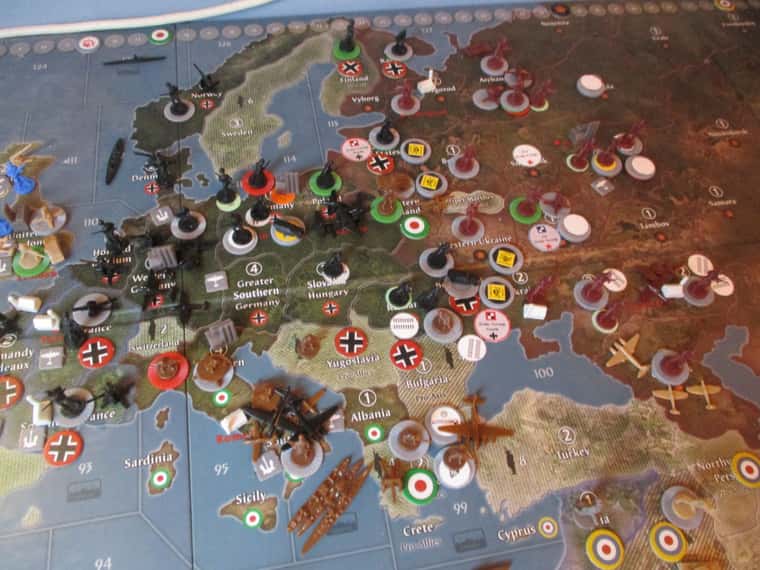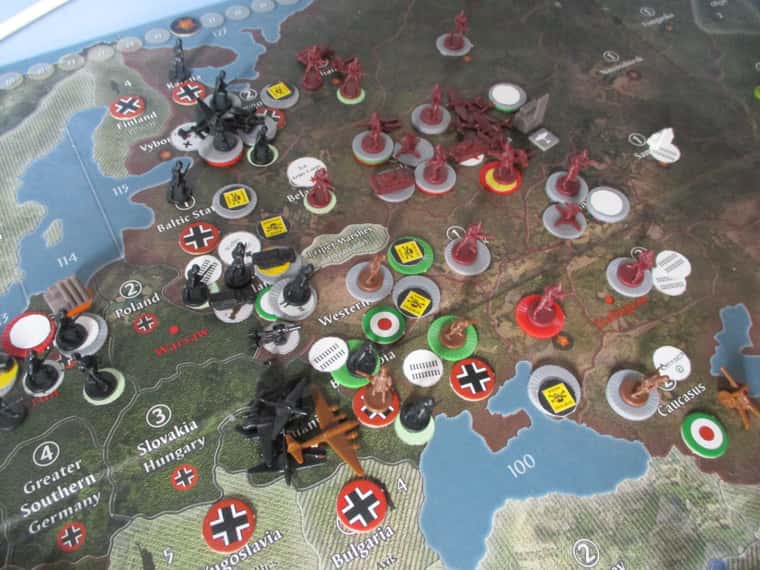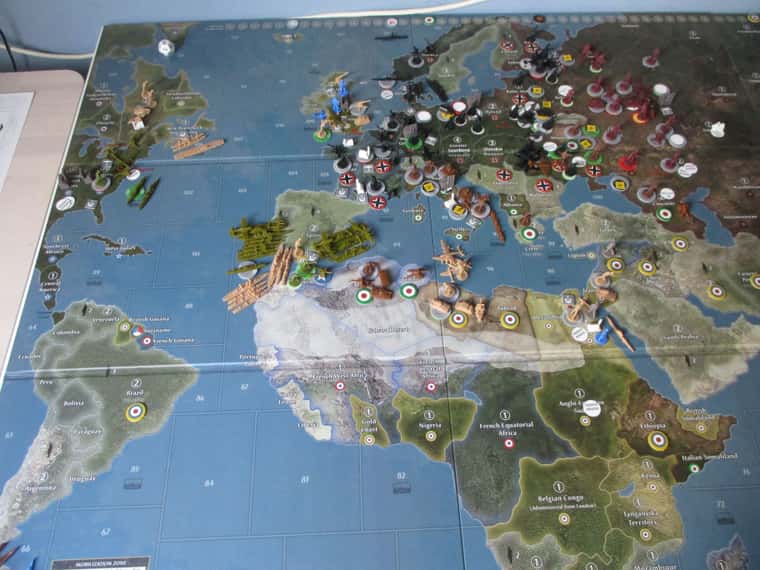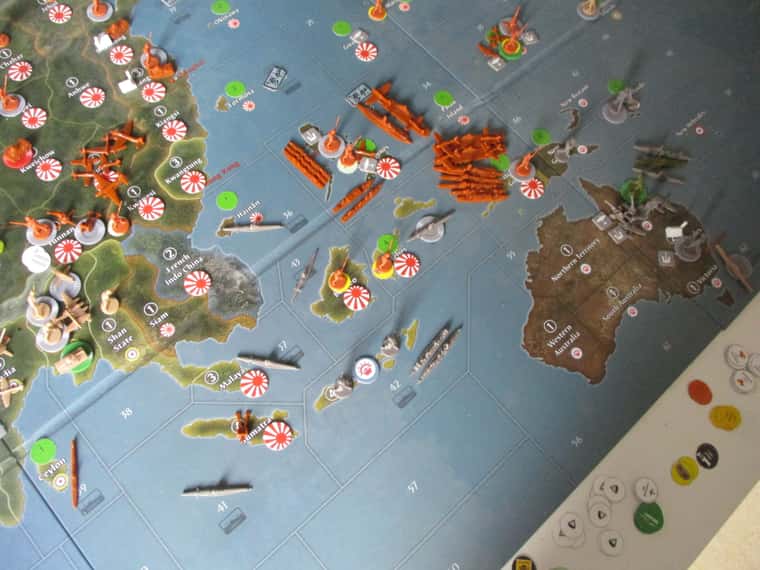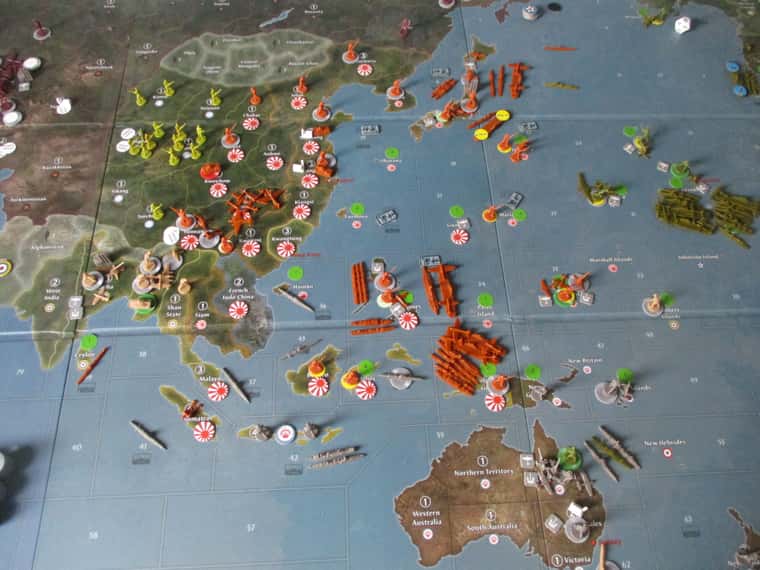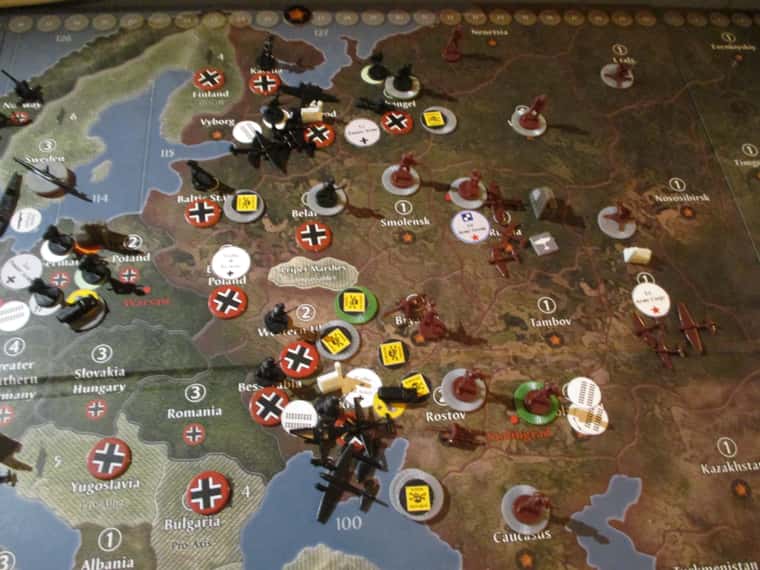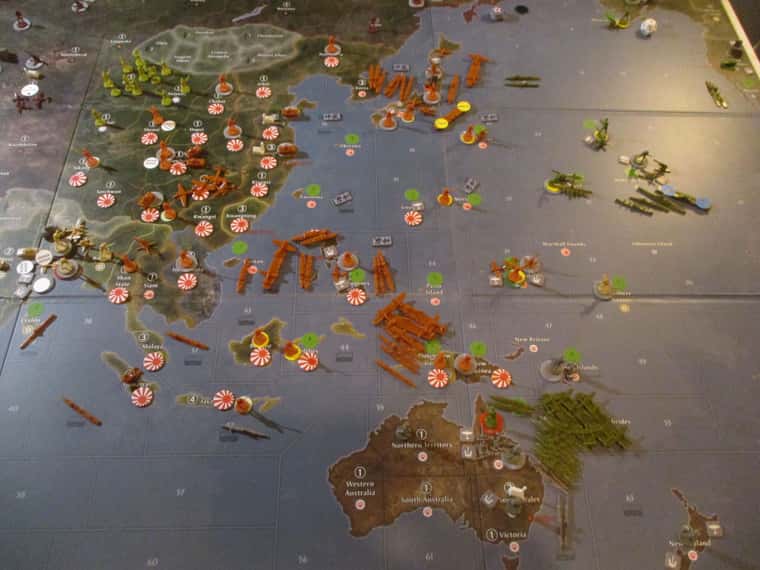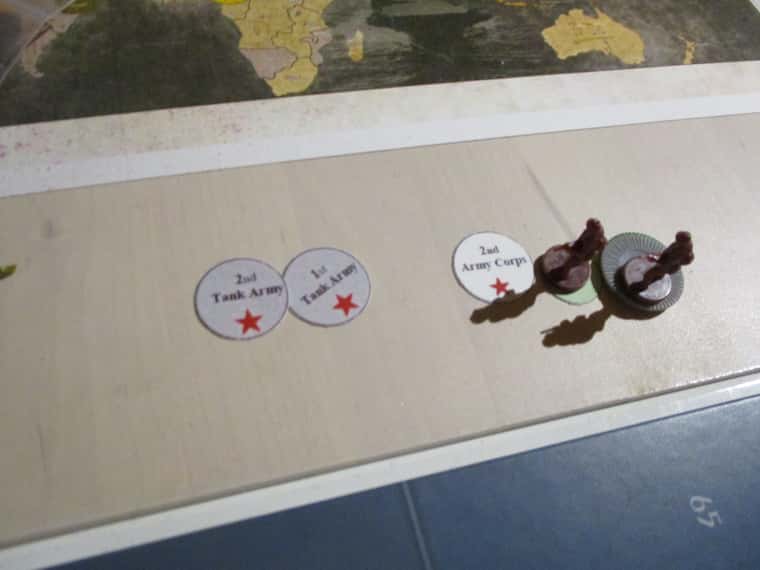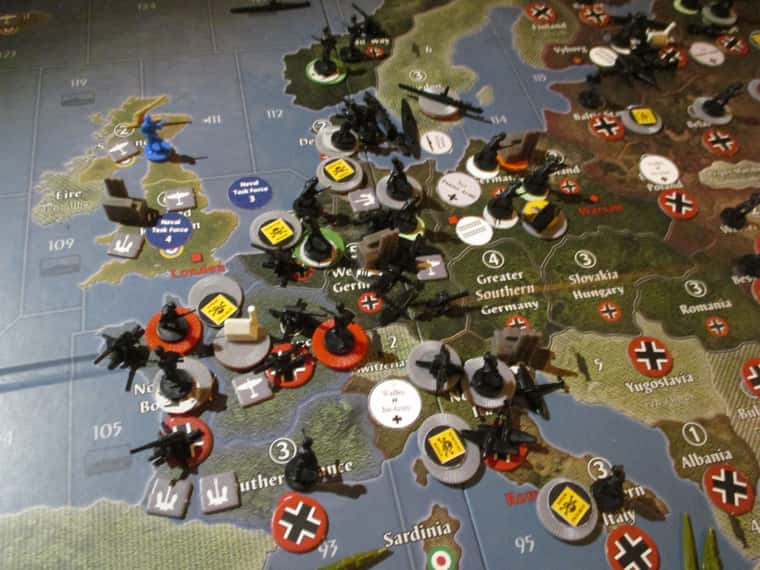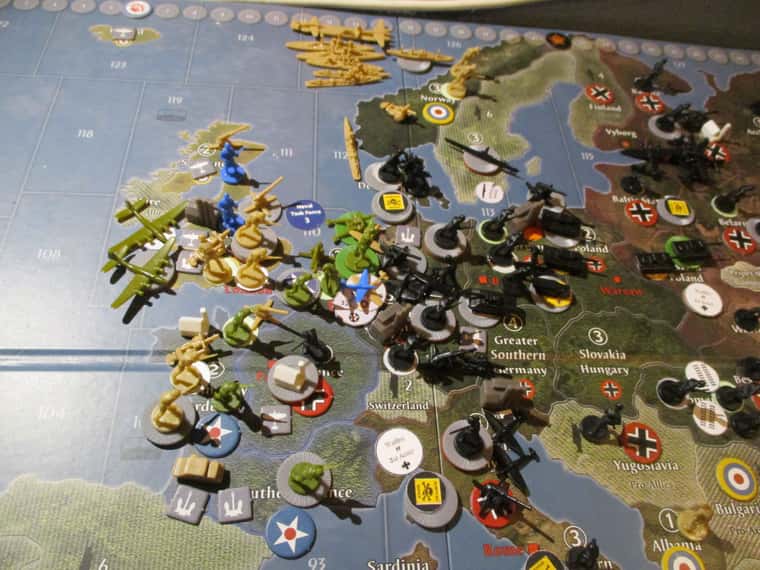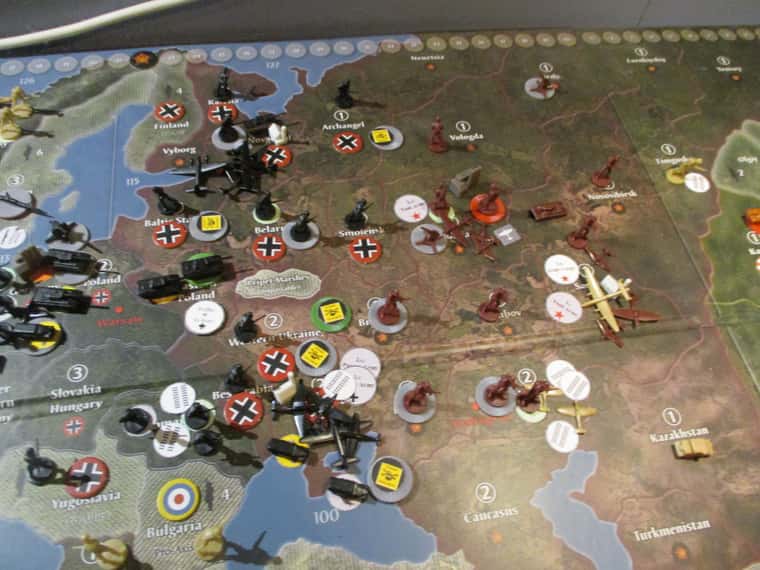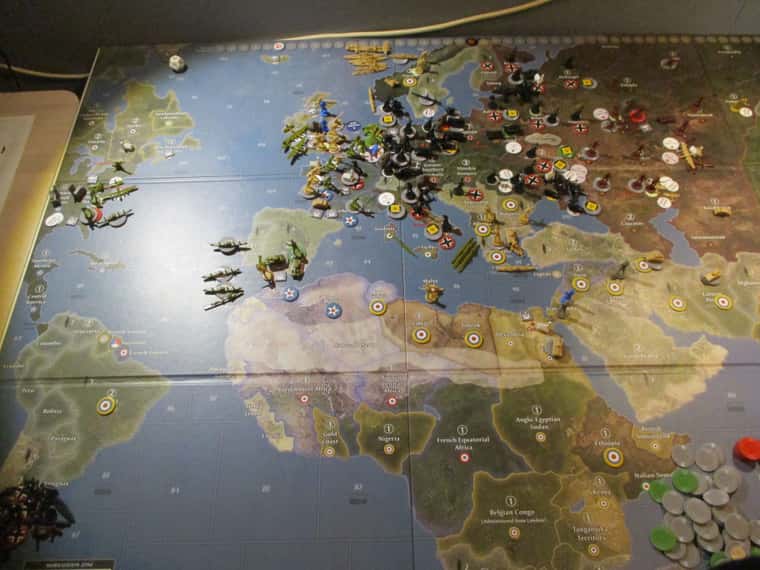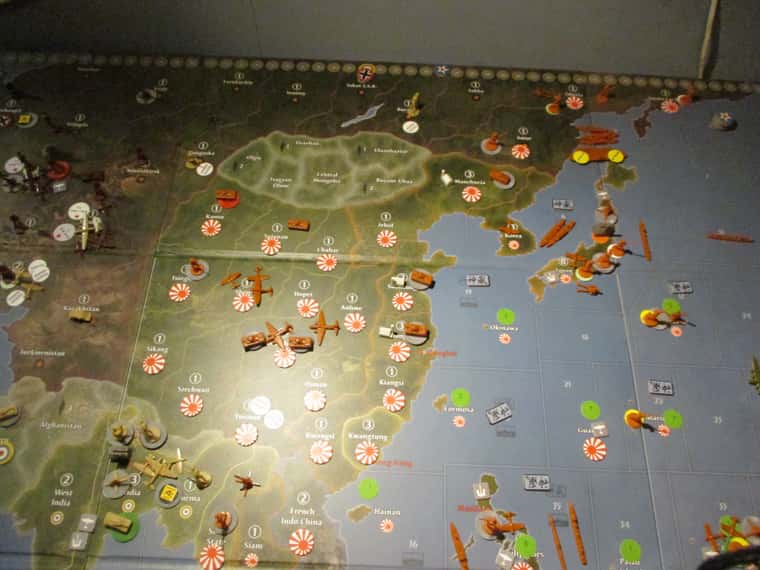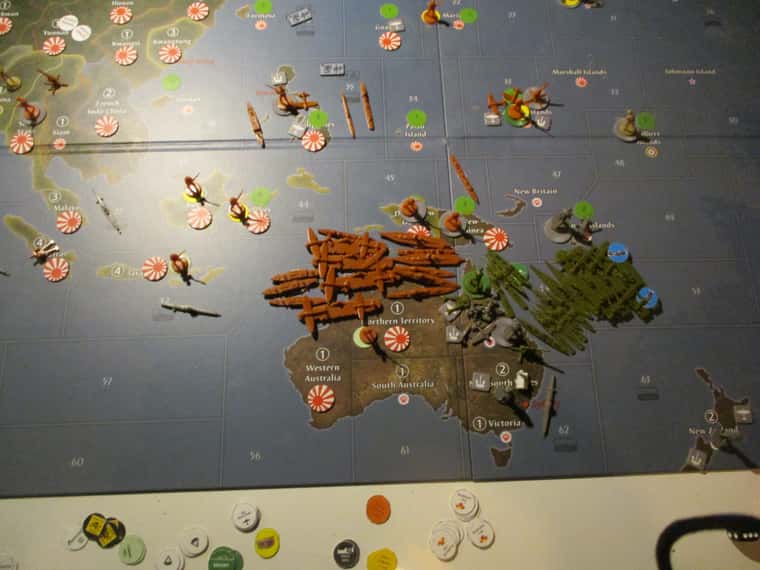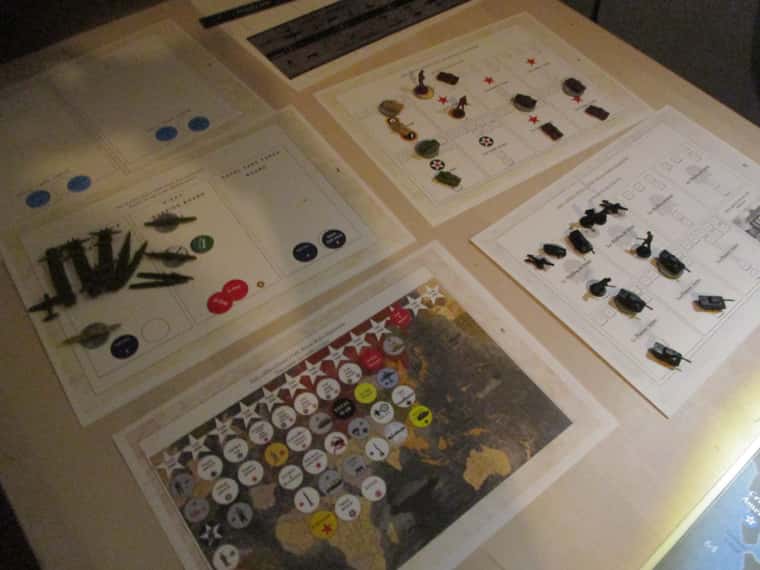Global 1940 House Rule Expansion, a solo game by VictoryFirst
No. 1 Game Report
Round: Late 1940 (Round 2)
Germany:
Germany’s purchase:
5 U-boats
1 Panzer General
1 Elite
10 Infantry
4 Paratroopers
1 Destroyer
No combat took place during this turn.
Germans moved some more units East. The U-boats in the Atlantic scattered, and took positions in Convoy Sea Zones of the UK. A new air force moved to Rome, replacing the old one, which was eliminated during the Taranto Raid. 1st Panzer Army was formed in Berlin. Collected IPCs: 66.
Soviet Union:
The Soviet Union continued to build up the defensive lines on the German Front. It purchased another six mines, a Commissar, and two Tank units, in preparation for forming the 2nd Soviet Army Corps in Moscow. The Soviets ended the turn with 53 IPCs.
Japan:
Japan purchased two minor factories, as well as some naval units.
Japan made a Declaration of War on this turn against the Western Powers. It continued its advance in China and conquered several Chinese territories. Malaya and the Philippines were successfully attacked and conquered.
French Indo-China was forced to join the Japanese Empire.
During NCM, Japanese aircraft moved into Siam, Kwangsi, and Japan/SZ 6, to threaten as many territories and sea zones as possible.
Japan placed factories in Shantung and Kiangsu.
United States:
The US purchased naval units. They attacked a U-boat Wolfpack in SZ 6 with two naval units and four air units. However, only two U-boats were killed, and both American naval units were destroyed.
In the Pacific, the Americans regrouped their navy and moved into offensive and defensive positions. One AC with two fighters moved south to SZ 54, to support ANZAC. The AC and two DDs were placed in SZ 10, and three DDS and a sub in sz 101. The US collected 81 IPCs.
China:
China again successfully recaptured Yunnan.
United Kingdom:
The UK purchased some air and land units and built four forts. Brazil and Persia joined the war on the Allied side, both on behalf of the UK. Sumatra was reinforced with infantry units and fortifications. One fort was also built in Borneo. A large force from Burma moved into Yunnan - to support the Chinese. The air units were placed in London, three tank units in South Africa, and infantry units in India.
The British collected 58 IPCs but ended with 48 due to blockades by the German submarines.
Italy:
Italy built land units and paratroopers. It attacked Greece and Algeria. Syria was invaded by Paratroopers. The Italians also moved some units East, to help out the Germans in Operation Barbarossa.
ANZAC:
built two subs and a destroyer. It attacked a couple of Japanese naval units. It also moved a fighter to Sumatra, to help with the defense.
France:
Not a lot to report from France, except that they made one funny little move: they moved their African destroyer to the Pacific, to SZ 41 near Sumatra, in order to protect the UK transport :)
Income totals:
With Bonuses:
Without Bonuses:
Some pictures that depict the situation in Late 1940:
